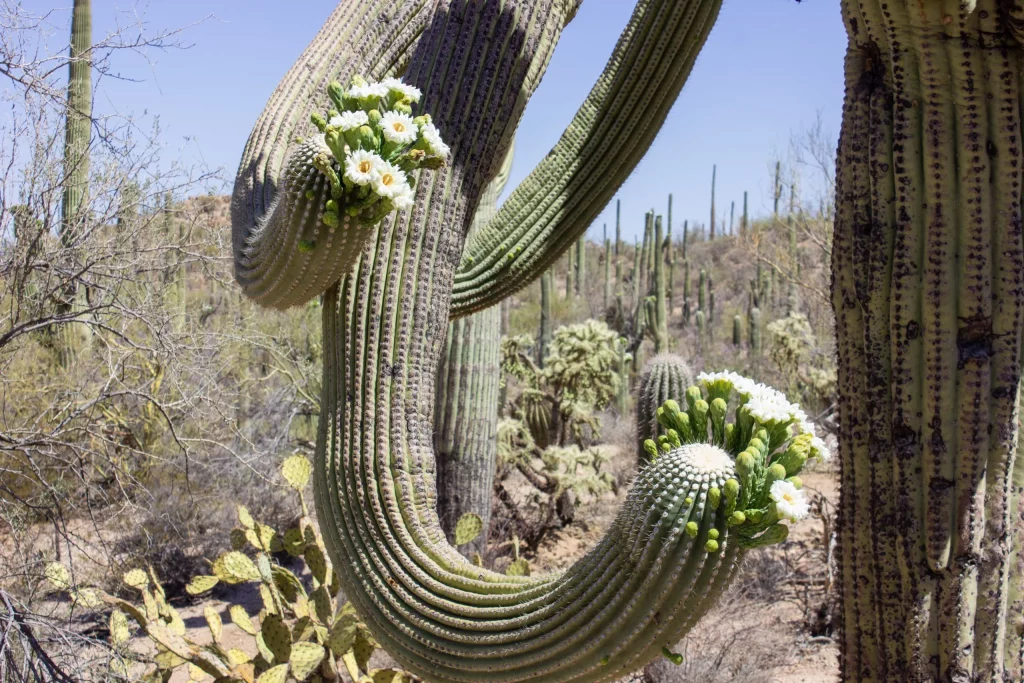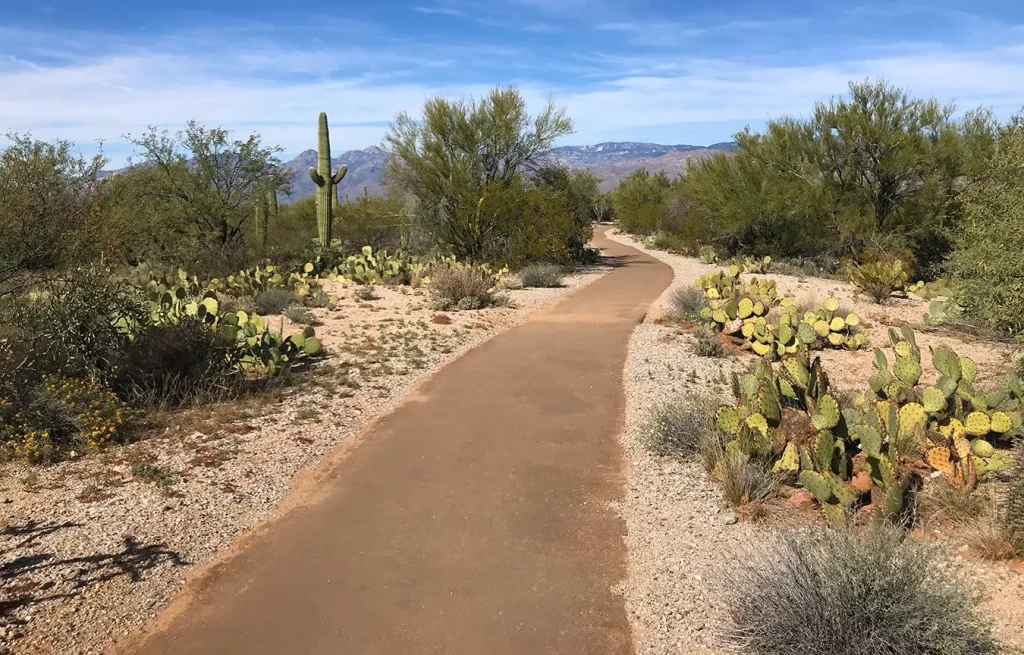Exploring the Majesty of Saguaro National Park
Welcome, fellow travel enthusiasts, to the enchanting realm of Saguaro National Park, a desert wonderland nestled in the heart of southern Arizona. Join me as we embark on a virtual journey through this vast expanse, where the iconic saguaro cactus reigns supreme, standing tall and proud as the symbol of the American Southwest.
The Desert Monarch: Saguaro Cactus
Our adventure begins with the saguaro, North America’s largest cactus, standing as a regal guardian over the Sonoran Desert. With its imposing stature and uplifted arms, the saguaro earns its title as the “desert monarch.” Spread across two sections, the Tucson Mountain District and the Rincon Mountain District, Saguaro National Park covers a total of 91,445 acres.

In the Tucson Mountain District, the landscape is hot, dry, and less vegetated, creating the perfect environment for the low Sonoran ecosystem. As we venture east to the Rincon Mountain District, the terrain becomes cooler and slightly wetter, transitioning from saguaro forests to pristine woodlands of oak and pine. Hiking through this district unveils a serene world of Douglas fir, ponderosa pine, and a sense of solitude that connects you to the heart of nature.
Survival Against the Odds
The saguaro’s survival story unfolds in the face of the Sonoran Desert’s extreme challenges—perennial drought, lightning storms, and voracious predators. With odds akin to a lottery, only a fraction of the millions of seeds produced each year manage to sprout, and even fewer reach the majestic heights of 50 feet, weighing up to a whopping 16,000 pounds. Yet, against all odds, these giants stand as a testament to the resilience of life in the desert.

Nature’s Spectacle: Wildflowers in Bloom
For those fortunate enough to visit after wet winters, a breathtaking spectacle awaits. The spring wildflower display transforms the desert into a riot of colors. The Mexican poppy, with its brilliant gold hue, is often the first to captivate our senses. Joining the floral parade are penstemons, lupines, desert marigolds, brittlebushes, and globe mallows, painting the landscape in vibrant shades of red, lilac, blue, and yellow. The saguaros, too, add their own touch to the canvas with late spring blooms.



How to Immerse Yourself
Now, let’s dive into the practical details for your journey to Saguaro National Park. If you’re starting from Tucson, take Speedway Boulevard west to Gates Pass Road for the Saguaro West district. For Saguaro East, head east from central Tucson on Broadway Boulevard to Old Spanish Trail. The park is accessible year-round, but for optimal weather, plan your visit from October to April. Be prepared for temperature extremes, with highs above 100°F from May to September.
On a one-day adventure, kickstart your exploration with a visit to the Arizona-Sonora Desert Museum before heading to Saguaro West. Pause at the Red Hills Visitor Center for an overview, take the Bajada Scenic Loop Drive, and stroll the paved Desert Discovery Nature Trail. As you continue east to the Rincon Mountain District, explore the Cactus Forest Drive and the Desert Ecology Trail, making a scenic rest stop at Mica View Picnic Area.

Frequently Asked Questions
Q: What is the best time to visit Saguaro National Park?
A: The ideal time to visit is from October to April when temperatures are milder. However, the park is open year-round, offering unique experiences in each season.
Q: How do I get to Saguaro West and Saguaro East?
A: From Tucson, take Speedway Boulevard for Saguaro West and Broadway Boulevard for Saguaro East.
Q: What wildlife can I expect to encounter in the park?
A: Keep an eye out for peccaries, kangaroo rats, Gila monsters, desert tortoises, rattlesnakes, and quail.
In our quest to capture the essence of Saguaro National Park, we’ve uncovered a world of natural wonders and survival against the odds. As you plan your own adventure, may the saguaros stand tall, welcoming you to their majestic kingdom in the heart of the Sonoran Desert.




